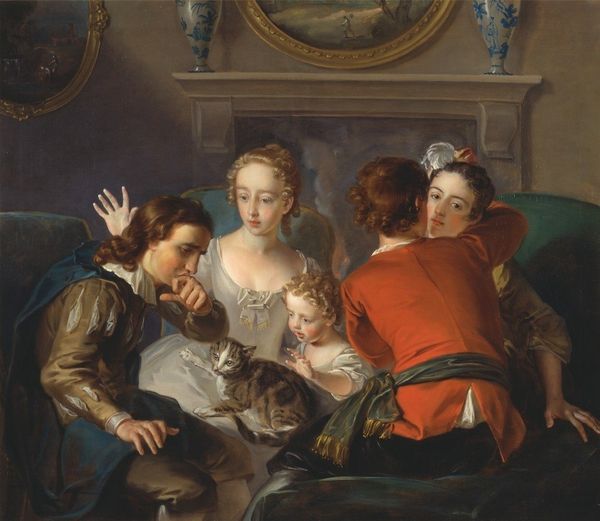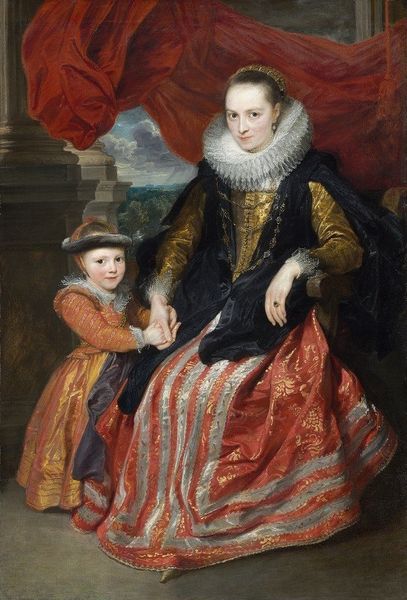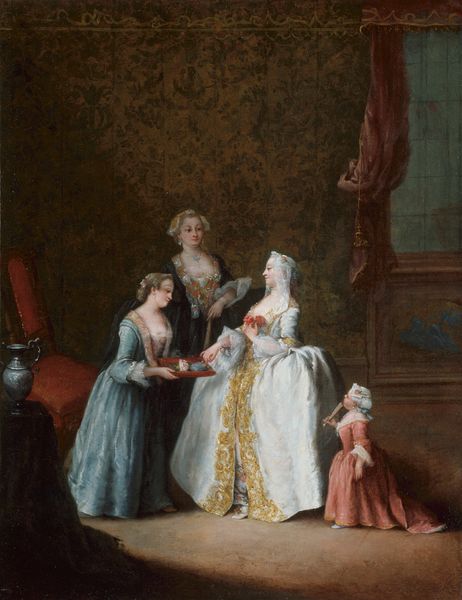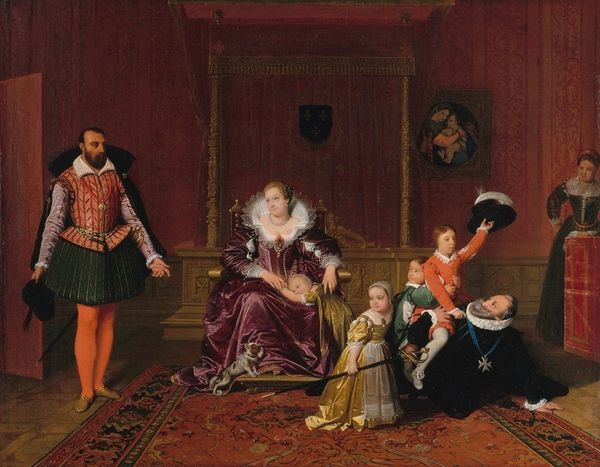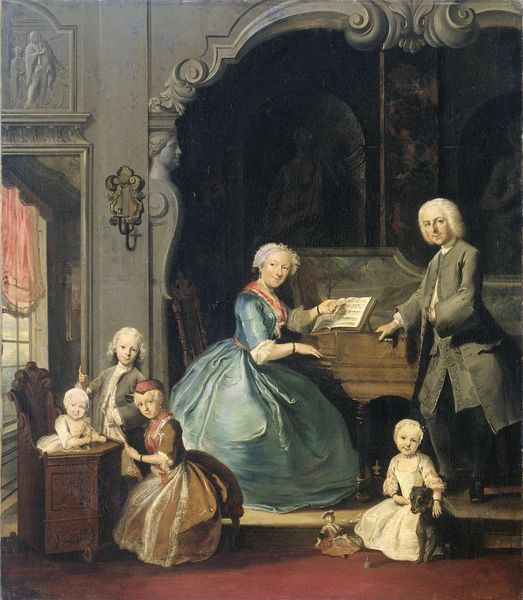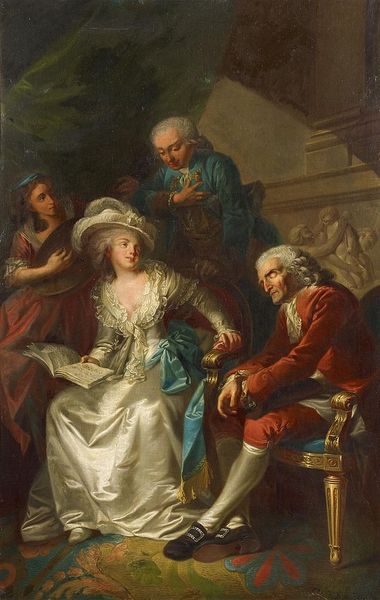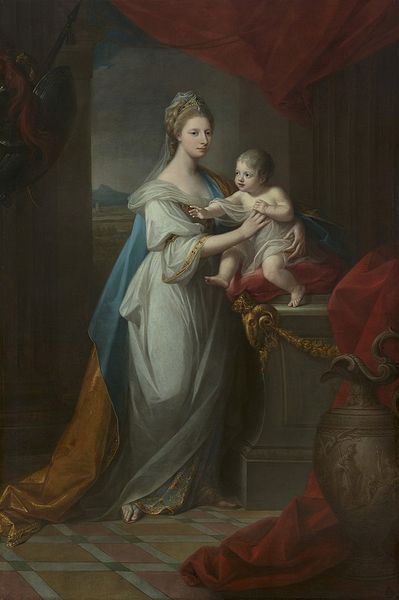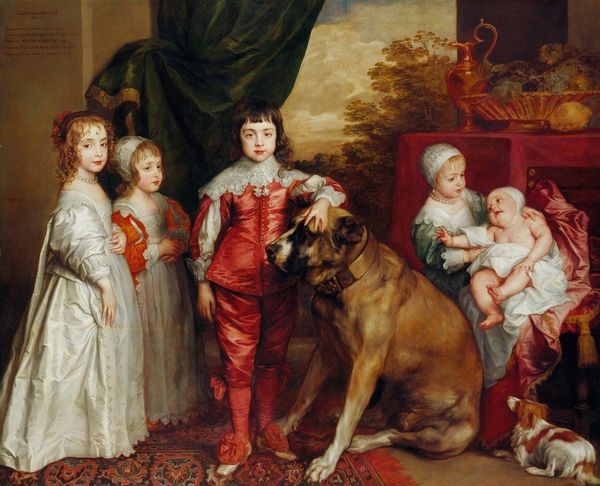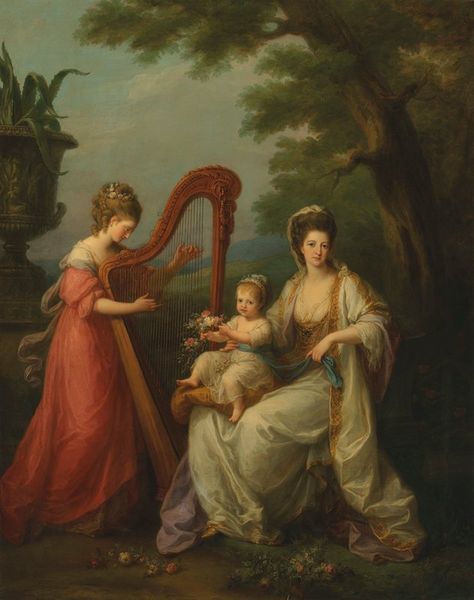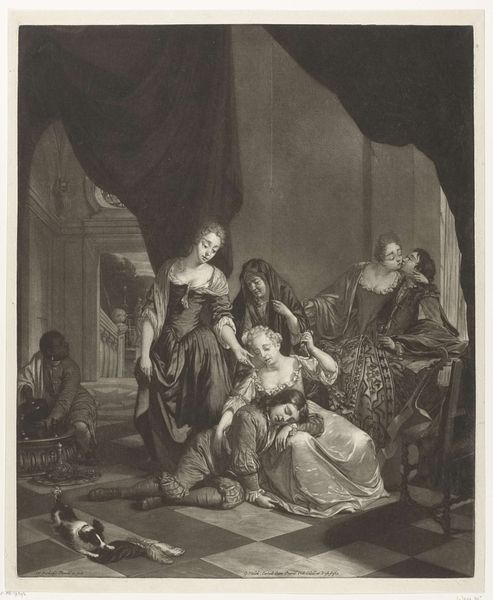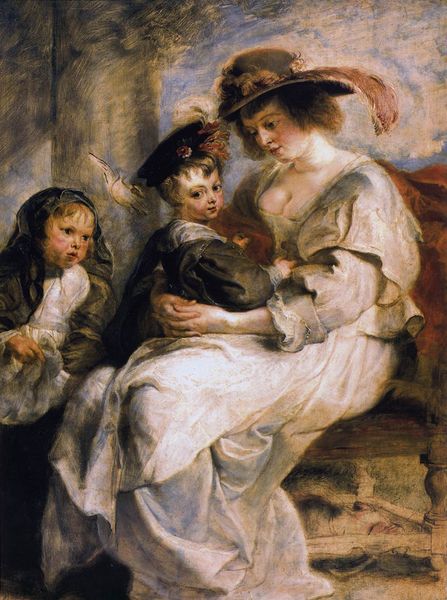
Marie-Antoinette de Lorraine-Habsbourg, Queen of France, and her children 1787
0:00
0:00
Copyright: Public Domain: Artvee
Editor: This is a portrait of *Marie-Antoinette de Lorraine-Habsbourg, Queen of France, and her children*, painted in 1787 by Elisabeth Louise Vigée Le Brun, using oil paint. The queen sits prominently with her children, and there's this heavy drapery in the background. How do you interpret this work? Curator: What strikes me immediately is the opulence achieved through material representation. The silk, the velvet, even the lace—it all speaks to the excessive consumption of the French aristocracy. Consider how the artist painstakingly renders each fabric. It’s not just about likeness, it’s a demonstration of wealth *through* material. Do you think it effectively conveys its message? Editor: It definitely feels lavish, but I also wonder about the artist's choice of materials themselves. Oil paint allowed for such rich textures, didn’t it? Curator: Exactly. Oil paint, at this time, was the near-exclusive domain of academic and court painting, an industrial product made affordable for those in power and denied to the common people. The labor involved in producing the canvas, the pigments, the brushes – everything highlights the disparities of the era. Were portraits like these displayed to reinforce social stratification, do you think? Editor: Absolutely! It's a display of power. Almost like propaganda using material objects and processes to create a narrative. Curator: Precisely. This isn't merely a portrait, but a carefully constructed statement of power rooted in materiality. The artist's choice and deployment of materials, consciously or unconsciously, actively bolsters social hierarchies. What I take away is that wealth flaunted through production became a political device that would ultimately topple. What’s your overall impression after considering it this way? Editor: Thinking about the oil paint, the fabrics depicted, it adds a new layer. The material aspect connects it directly to the economic inequalities of the time.
Comments
No comments
Be the first to comment and join the conversation on the ultimate creative platform.

